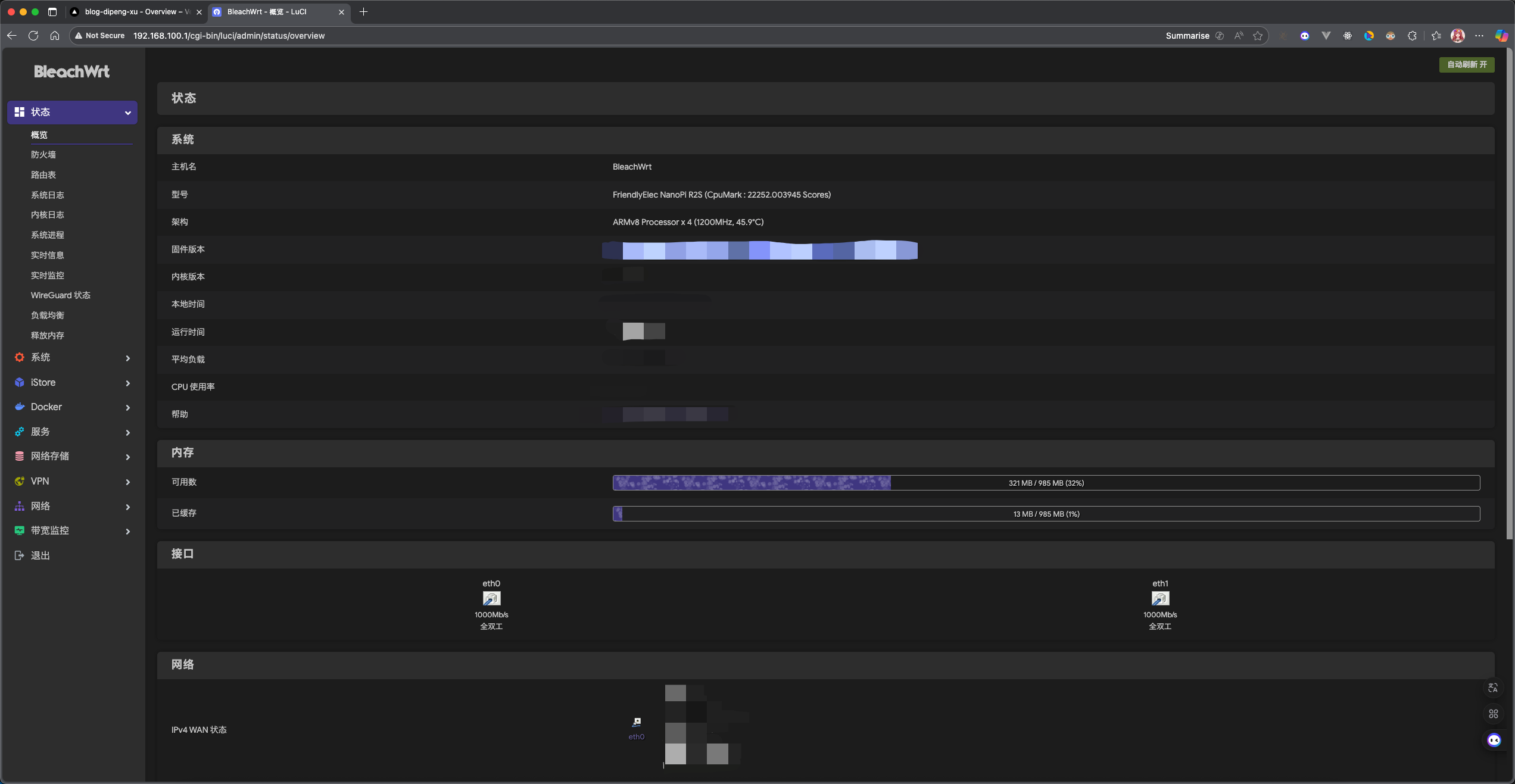Optimizing My Home Network with the NanoPi R2S
Recently, I deployed a NanoPi R2S (by FriendlyElec) at home, and it’s proven to be an extremely useful tool.
Router-Level Global Internet Access
With the R2S, I’ve enabled global internet access across my entire home network. This means I no longer need to install a VPN or similar tool on every device for wide-area network access—everything connected to my LAN can access the broader internet directly. (Of course, this only works at home; if I use mobile data outside, Google and other services remain inaccessible.) Essentially, the R2S allows me to manage wide-area network access at the router level.
Here’s a simplified connection diagram: 
OpenWRT Login Container Frame

OpenWRT Host Container Frame

The Overheating Challenge
However, the R2S does have a downside: it gets extremely hot under heavy use. My home setup includes a number of smart devices—lamps, speakers, and other networked appliances—which generate substantial traffic. Even with a XIAOMI AX3000 router distributing connections efficiently, the R2S struggles with high data throughput and frequently overheats.
Quick Fix: Adding a Fan
To solve the overheating issue, I attached a small fan directly to the R2S using a rubber band. The result was immediate—the device’s temperature dropped significantly, and it has been running stably since.
Final Thoughts
The NanoPi R2S is a fantastic tool for managing global internet access in a home network. With just a little ingenuity—like adding a fan to prevent overheating—it becomes a reliable and efficient solution for heavy network usage, especially in smart homes.